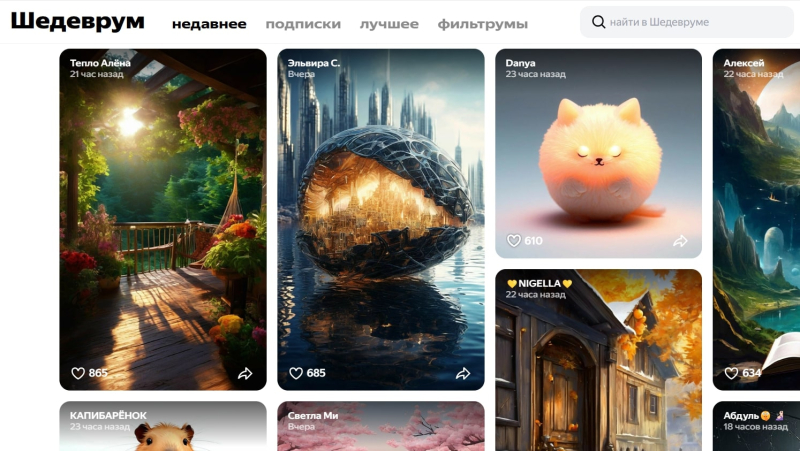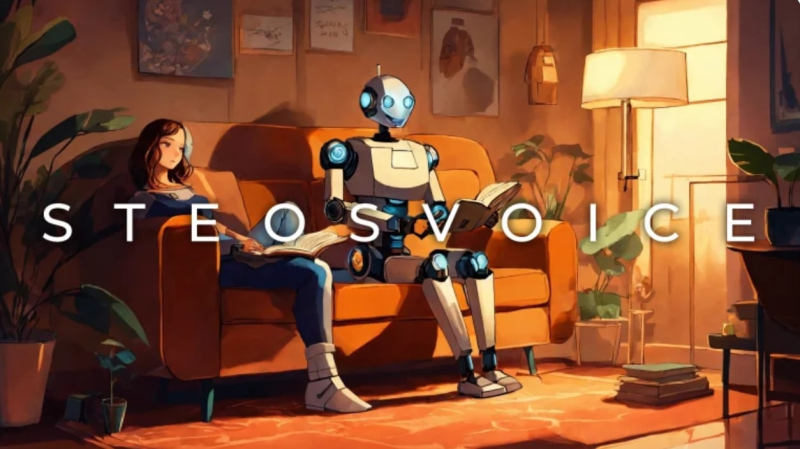Neural networks in today’s education
Classifying data, drafting and editing texts, and even designing presentations – none of these are a challenge to networks such as ChatGPT, GigaChat, or YandexGPT. Here are a few other examples of the kinds of things you can use AI for if you work in education:
Answering questions: Perplexity AI
The tool functions like a search engine: you can use it to draft curricula, break down complex topics, analyze legal documents and financial reports, compile spreadsheets, and write emails.
Finding sources and publications on your research topic: Consensus.
This is an AI-based scientific database, somewhat like the combination of Google Scholar and ChatGPT.
Making a presentation: ChatBA
Creating images from prompts: Shedevrum and Kandinsky.
Generating video based on a prompt: Lumen5 and Runway Gen-3.
Translating text: DeepL Translator
The service supports 33 languages and can process regular text as well as *.pdf, *.docx, and *.pptx files while preserving their formatting.
Turning text into audio: SteosVoice
Rephrasing text: Retext.ai
Finding the right AI tool for the task: AItools and AI Tool Master List
For instance, lecturers might be interested in services that generate learning materials, lesson plans, and even entire courses.
Shedevrum. Credit: shedevrum.ai
Not just images: AI as a means of personalization
But generating images, videos, or even lesson plans is far from the limit – and the main purpose – of AI in education.
“It can be fun to generate memes and videos, but those aren’t the things we should be using AI for when it comes to education. Its most important application is in ensuring adaptivity and mass personalization. AI allows us to provide every student with a “mentor” who will support them, monitor their performance, and adjust the learning process if problems arise,” says Andrey Komissarov.
Personalization of learning remains one of the key trends in modern education. Personalized educational programs can be made to suit each student’s interests, experience, techniques, and rate of knowledge acquisition. At the same time, the student can choose the subjects they’re interested in and acquire a unique set of skills – one that differs from everyone else’s.
It’s possible to address students’ individual needs without AI, too – for example, the creators of educational programs are quite capable of coming up with a few specializations or elective courses. But in order to make education truly customizable, neural networks are essential.
Here’s what they can already do:
- analyze a student’s digital footprint in order to gauge their interests;
- use that data to create a personal learning track;
- assess the student’s knowledge;
- adjust the learning track in real time.
For instance, Andrey Komissarov’s team has used AI algorithms to create personal learning tracks for the students of University 2035 (an online learning platform – Ed.). The developers analyzed the students’ interests and knowledge base, compared that data to job market reports, and compiled digital profiles for specific job listings, complete with descriptions of the required job skills. Based on these profiles, the neural networks also suggested relevant online courses to all students.
SteosVoice. Credit: cybervoice.io
Your own personal teacher
Another example of neural networks in personalized education is the AI tutor that assists students with home assignments in social studies and physics, also developed by Andrey Komissarov’s team. This is actually an ensemble of neural networks trained on pre-processed data; it features an audio interface and a voice control feature. Unlike similar solutions, this product corresponds to the federal educational standards at the core of all educational programs in Russian schools. At the moment, several schools within the educational ecosystem Samoletum are already using the AI tutor.
What does the AI tutor do?
Answers questions on the subject of study. The Interlocutor module works on the feedback loop principle: this means the tutor explains the topic in small parts, occasionally making sure that everything is understood, asking the student to rephrase the material or provide an analogy. Thus, the program ensures that the user has learned the subject and can apply it correctly. The module’s main goal is to find an individual approach and deliver the information in an accessible way. For that, the tutor will adjust its communication style – citing examples from cartoons and fairy tales or explaining more terms at once.
“At the core of the AI tutor is a large language model and a unique knowledge tree. Within this tree, every topic is split into small lessons, each with its own key idea. Between these ideas, we have logical connections, and each idea is cemented in with a verifying question. This large knowledge tree is used as a map over which the LLM travels. You can’t use prompts to generate anything beyond the map. This way, we can avoid hallucinations and provide students with solid knowledge, not something made up by the neural network,” emphasizes Andrey Komissarov.
Assesses the student’s knowledge of the topic. The Examiner module reviews an answer to an open question and grades it. The neural network doesn’t value how much the student has memorized the subject as much as how well they’ve understood it. The tutor also points out errors, suggests improvements, and advises which topics to study further.
Helps develop soft skills. The AI tutor encourages students to think about problems on their own and to describe their train of thought. Thus, they learn to critically assess risks, formulate cause-and-effect links, ask questions, conduct multi-factor analysis, generalize, and particularize.
Evaluate the student’s communication skills. For this, the AI tutor analyzes the tone and speed of speech, quality and specifics of filler words, and the number and length of hesitations – pauses and sounds such as “uhm” that occur involuntarily while the speaker is in thought. This way, it’s possible to assess how well a student understands the topic and responds to questions.
Compiles progress reports for the lecturer. Results of each student’s individual work with the AI tutor are provided to the lecturer via a dashboard. This includes time spent on studies and the identified issues with memorization, understanding, thinking, and speech. Even in large groups of students, it only takes a single lesson for the lecturer to determine which students require assistance.
Andrey Komissarov’s lecture was held as part of the fifth annual online intensive course Union of Intelligence in the Art of Teaching. The event is organized by ITMO’s Department of Academic Affairs. This year, it involved more than 45 experts in the fields of AI and education from ITMO, other leading Russian universities, Big Tech, and the IT industry.





